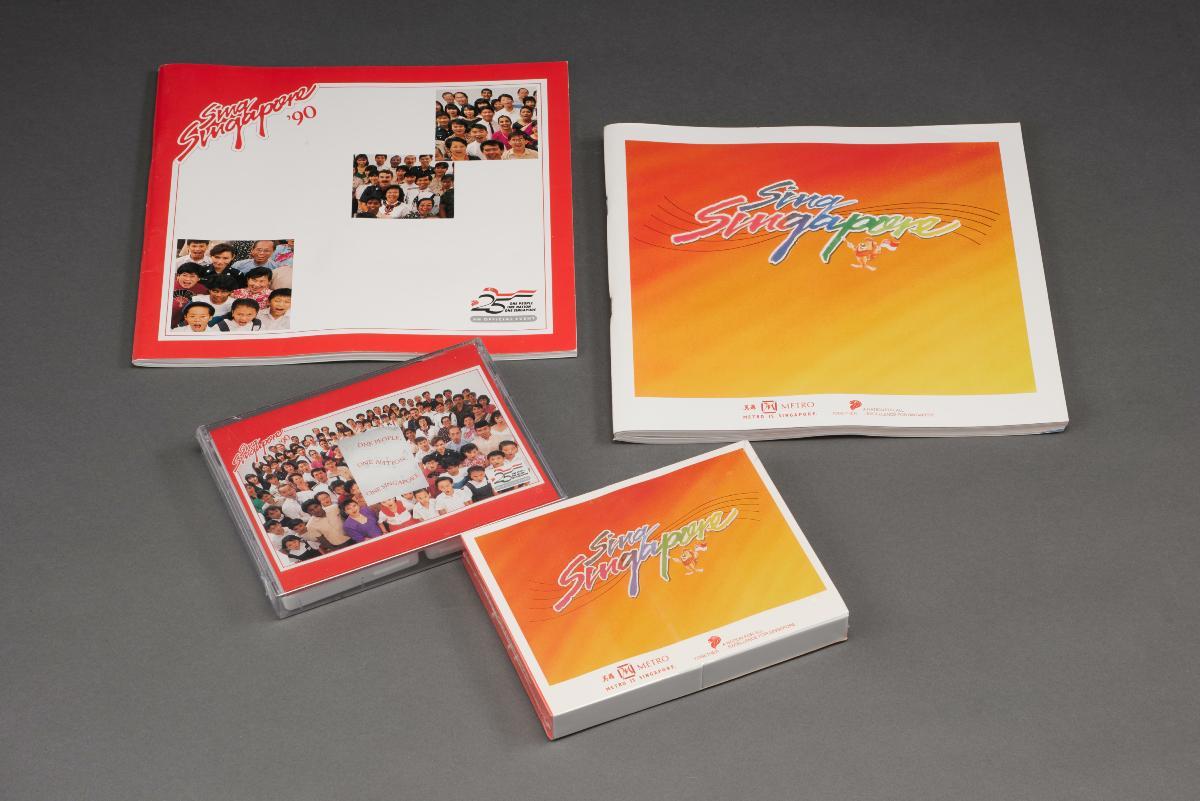TL;DR
The loud, joyous, and colourful tradition of lohei, or the tossing of raw fish salad, is a boisterous Chinese New Year highlight in Singapore. Every ingredient has a symbolic, auspicious phrase to be exclaimed as it is added to the salad, and diners often toss the salad as high as possible into the air to welcome greater abundance and prosperity.
Lohei, or 捞起 in Cantonese, is one of the biggest highlights during Chinese New Year, where families and friends come together to “toss up a good fortune”. The yusheng, 鱼生, is a mixture of thinly sliced raw fish and shredded vegetables, seasonings, and condiments - added one by one in a specific order. Each ingredient symbolises well-wishing. With each added ingredient, an auspicious phrase is recited.
Diners would then stand around the table, each with a pair of chopsticks to toss the mix while exchanging blessings. It is popularly believed that the higher the toss, the better one’s prospects and fortune for the year ahead.

A humble 2,000-year-old tradition
The earliest written documentation of eating raw fish in Chinese culture traces back to 823 BCE during the Zhou Dynasty (1046 BCE–256 BCE). During the Han dynasty (206 BCE–220 CE), it became so popular that Chinese scholars such as Cao Zhi wrote poems praising the delicacy. However, towards the end of the Qing dynasty (1889 CE–1912 CE) the dish almost disappeared in China and was only common in the southern parts of Guangzhou and Chaozhou.
In the Guangzhou cities of Jiangmen and Shunde, fishermen would celebrate the 7th day of Lunar New Year, or 人日, believed to be the birthday of all of humanity. On this day, the fishermen would feast on their catches – a humble, raw common carp dish mixed with soy sauce, vinegar, peanut oil, pickled shallots, and shredded vegetables.
Yu Sheng, a name of abundance
These early fishermen called the dish yusheng, which plays beautifully on the homophones of both “鱼” (fish) and “余” (abundance), as well as “生”, which means both ‘raw’ and ‘life’. So, yusheng also means “abundance of wealth and long life”.
Yusheng was introduced by Cantonese and Teochew immigrants from China. Since the 1930s, what started out as a simple raw fish dish has gone through multiple evolutions to become the dish it is known as today.

The forefathers of yusheng in Singapore – Four Heavenly Kings
Early immigrants to Singapore had adapted the dish, such as replacing grass carp with wolf herring to avoid parasites from carp. Yusheng in the 1900s consisted of raw fish, slices of cucumber, radish, and coriander topped with vinegar, oil and sugar. As the dish evolved according to local tastes and ingredients, Loong Yik Kee Restaurant started selling its unique version in 1933, with the addition of pickled vegetables, sugar and vinegar.
As the trend caught on, chefs in Singapore started experimenting with their own versions. In 1964, four chefs at the newly opened Lai Wah Restaurant (known affectionately as the “Four Heavenly Kings”) Loke Yuke Pui, Than Mui Kai Yu, Hooi Kok Wai, and Sin Leung, came up with the “七彩鱼生” (seven-coloured raw fish salad). Their version was introduced with improved fragrance, more colours, and served with greater texture and depth with the addition of peanut and flour crisps.
 Master chef Hooi Kok Wai, co-founder of Dragon Phoenix restaurant, still spends the majority of his day at wet markets in search of good and fresh fish.
Master chef Hooi Kok Wai, co-founder of Dragon Phoenix restaurant, still spends the majority of his day at wet markets in search of good and fresh fish.
“We also gave our yusheng different names. Since everyone likes prosperity, we called it ‘好运鱼生’ (good luck yusheng), ‘发财鱼生’ (prosperity yusheng) and ‘鸿运鱼生’ (fortune yusheng).”
- Chef Hooi Kok Wai
Lohei - Created by the people, loved across generations
Yusheng became widely popular in Singapore after the Four Heavenly Kings decided to add their seven-coloured yusheng to their Chinese New Year set dinners. The trend picked up in the 1970s, when the younger diners started embracing it.
When the dish was first introduced, the four chefs paired auspicious phrases with some of the original ingredients. Red pickled ginger was paired with “鸿运当头”, or “Good luck is approaching”. Persimmon came with “四季平安”, translating to “Four seasons of peace and prosperity”. For five spice powder or pepper, they would say “五福临门”, “5 blessings – longevity, wealth, health, kindness and peace upon your home”.
The customers themselves spontaneously associated other ingredients with their own auspicious phrases and well wishes.
Some references also speculated that because the dish was so big and difficult to mix evenly, diners started to stand up from their seats to help the waiter toss the yusheng. This somehow evolved to become a ritual where everyone stands up as a celebration of togetherness.
As the popularity of yusheng soared throughout Singapore and Malaysia, it gradually became the must-have dish of today. Every family dinner or corporate gathering during Chinese New Year would have to involve lohei. This practice is celebrated at restaurants, homes, and office pantries, and came to include friends and colleagues from different cultures – wherever people fancied a lively gathering around the table.
A step-by-step guide to Lohei
|
Steps |
Phrases |
|
|
1. |
The yusheng is placed on the table, as diners gather around. |
Gong xi fa cai 恭喜发财: ‘Congratulations for your great wealth!’ |
|
2. |
Raw fish slices are added. |
Nian nian you yu 年年有余: ‘May you have abundance every year!’ ‘Fish’ (yu) and ‘abundance’ (yu) in Mandarin are homophones.
|
|
3. |
Pomelo or lime is added. |
Da ji da li 大吉大利: ‘May you have great luck and prosperity!’
|
|
4. |
Spices are added. |
Zhao cai jin bao 招财进宝: ‘May you attract wealth and treasures!’ |
|
5. |
Oil and plum sauce are drizzled over the ingredients. |
Yi ben wan li 一本万利: ‘May your capital bring you ten-thousand-fold profits!’ |
|
6. |
Shredded carrot is added. |
Hong yun dang tou 鸿运当头: ‘Good luck is approaching!’ ‘Red’ (hong, referring to the reddish hue of carrots) and ‘great’ (hong) are homophones. |
|
7. |
Shredded green radish is added. |
Qing chun yong zhu 青春永驻: ‘May you remain forever youthful!’ ‘Green’ (qing) and qing in qing chun (‘youthful’) are homophones. |
|
8. |
Shredded white radish is added. |
Feng sheng shui qi 风生水起: ‘May you progress quickly!’ |
|
9. |
Crushed peanuts are poured over the ingredients. |
Jin yin man wu 金银满屋: ‘May your house be filled with gold and silver!’ |
|
10. |
Sesame seeds are sprinkled. |
Sheng yi xing long 生意兴隆: ‘May your business prosper!’ |
|
11. |
Deep-fried flour crisps in the shape of golden pillows are added. |
Man di huang jin 满地黄金: ‘May your floor be covered in gold!’ |
|
12. |
The diners stand and proceed to toss the ingredients on the plate. |
Lo hei 捞起: ‘Let’s toss up good fortune!’ |
Lohei – the evolution of a tradition that constantly brings people together
Today, friends and families celebrate lohei in restaurants and homes, welcoming the new year with words of prosperity and a strong sense of togetherness. Every ingredient represents a blessing, and every lohei signifies a strong sense of unity and good intentions for the new year.
As times evolve, the yusheng dish continues to incorporate new adaptations to suit different preferences, welcoming diners from other cultures to join in the celebrations.
“For instance, some add abalone, salmon and even lobster. The ingredients then become more flavourful. To customers, more choices is always a good thing. If yusheng can be brought to greater heights and out of this region, that will be the best. However, I feel that fish should still be at the heart of yusheng.”
- Chef Hooi Kok Wai
Singapore restaurants in recent years have also started offering halal yusheng1, takeaway yusheng, vegetarian and vegan yusheng (fish is replaced by gluten strips of vegetable), and even a yusheng buffet2. Those looking for a convenient option can even pick up a ready-made yusheng from the supermarket to bring home for the toss.
This year, Singaporeans will also get to experience a different kind of lohei to help us stay safe during the global Covid-19 pandemic. Diners at restaurants will have to refrain from shouting their auspicious phrases while donning a face mask. But despite these limitations, lohei remains part of many Singaporeans’ Chinese New Year celebrations this year, and perhaps as Chef Hooi suggested, “Silence is golden, and perhaps this might even add more prosperity to our lohei.”

















